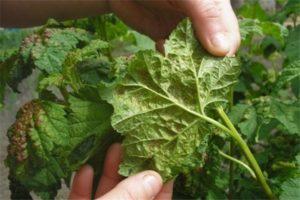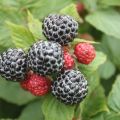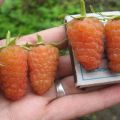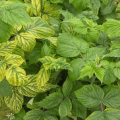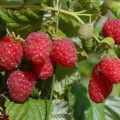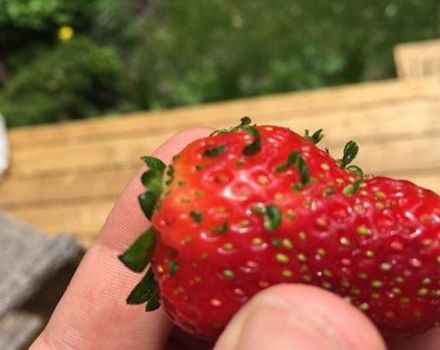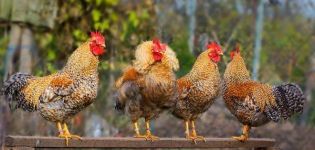Description of remontant raspberries of the Bryanskoe Divo variety, growing and care
Repaired raspberries of the Bryanskoe Divo variety are suitable for most gardeners. Although the requirements are different, this plant meets everyone. The hybrid has large berries and good taste. Such raspberries will not only complement a culinary masterpiece, but will also delight the eye.
Breeding history of the variety
This hybrid was created in the Bryansk region. As a result of scientific work, this variety has received the best qualities. Raspberries are great for areas in central Russia. The variety was created in 2001 by I. Kazakov and S. Evdokimenko, and was officially registered in 2006.
Description and characteristics of raspberries Bryanskoe Divo
Raspberries have no particular differences, but other varieties will envy its characteristics. The plant is medium in size and its berries are large and juicy.
Appearance
The bush reaches a size of 1.5-1.7 meters. Branches are spreading, young shoots are very flexible. Their skin is dark green or brown. The surface is covered with thorns of different sizes. The leaves of this plant are quite large. Their shade is from bright to dark green, rough. The leaves have a low moisture content.
Raspberry flowers of the Bryanskoe marvel variety are white, not very large in size.
The berries are also large, weighing from 5 to 11 grams. Their shape resembles a cone. The fruits are bright red, less often burgundy, if they are overripe. Taste quality is excellent. This variety has a sweet and sour taste and a pleasant, fresh aroma.
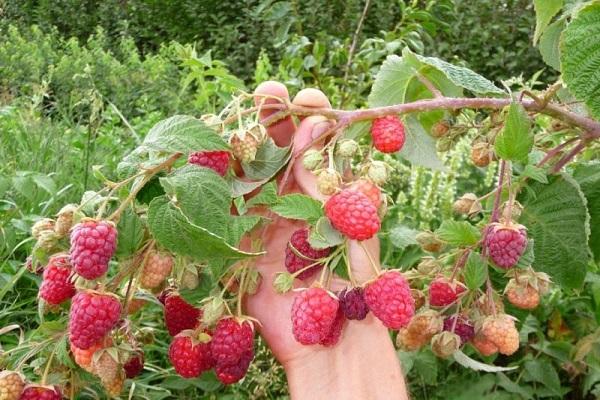
Drought resistance, frost resistance
Raspberries of the Bryanskoe miracle variety are frost-resistant to negative temperatures. Freezing of shoots is very rare. Raspberries can go without water for a long time, but this is not abused, since this factor directly plays a role in the yield of the variety.
Productivity and fruiting
Raspberries are known to many gardeners for their high yields. From one bush, you can collect 3-5 kilograms of berries. This is due to the fact that the plant has a long fruiting period. The harvest date ranges from August to the end of September. This usually occurs during the growing season.

Scope of fruits
This variety is used for various purposes.Amateur gardeners often use berries in the preparation of homemade products: preserves, stewed fruit, jams and other culinary purposes.
In a larger application, the plant is used as a medicine. Most often these are dried berries, which contain many different vitamins and microelements necessary for a person.
Disease and pest resistance
Also, the hybrid copes well with the effects of small pests and individual diseases. This factor affects the popularity of the variety. Farmers choose this hybrid in order to prevent potential problems and reduce the cost of growing and maintaining the plant.
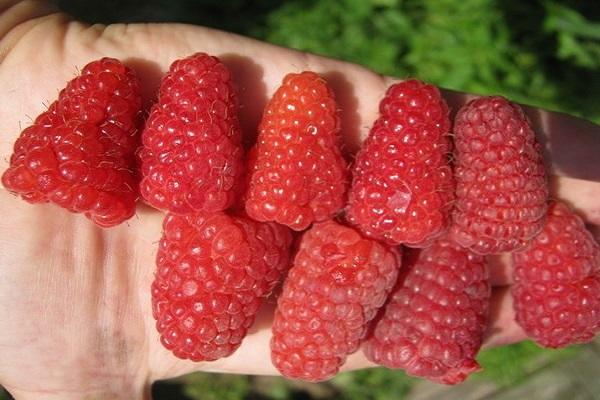
Main positive and negative aspects
Like every crop, this plant has its pros and cons:
- The variety is resistant to disease, extreme temperature changes and drought.
- The yield of this hybrid pleases gardeners.
- In addition to culinary purposes, it is also used in medicine.
- After overripe, the berries do not fall.
- The plant does not tolerate transportation well, therefore it does not let the juice out for only two days.
- Too many spikes will interfere with quick collection and will require additional protection.
Features of growing raspberries
The seedlings take root very well in a new place and put down strong roots, after which they form a reliable root system. But before planting raspberries, there are many important factors to consider. This is especially true of agricultural technology.
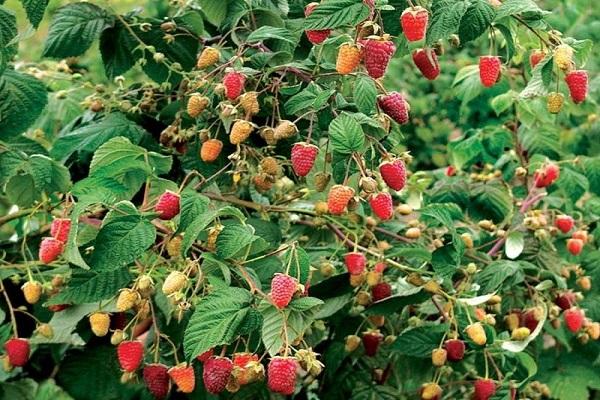
Recommended timing
It is important to choose the time for planting, counting also on frosts and taking into account all possible vagaries of the weather. Planting is carried out in spring or autumn. The most suitable temperature would be 10 -12 degrees above zero.
The soil should be slightly warmed up and prepared to all standards. At high temperatures, planting is not carried out, since then there is less chance that the plant will take root. The soil will dry out very quickly and will not be suitable for planting.
Choosing the right place
For planting, choose a place with loose loamy soil. There, the roots will take root better. Field plants grow on such soils, so it is not difficult to find it. The depth of the planting pit is approximately 2 meters. They choose a sunny place, make beds near the fence. The plant will be protected from the wind.
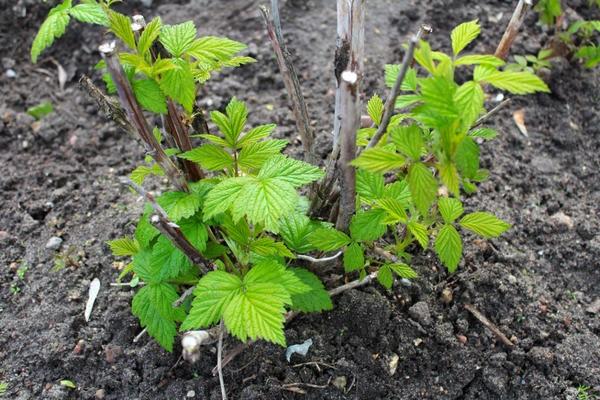
Preparation of planting material
The soil is chosen not too acidic. Seedlings for planting are chosen. The height of the seedling is from 0.8 to 1 meter. The plant usually has 2-3 young shoots. It is important that the raspberry root system is not damaged, as this is the key to the successful cultivation of delicious berries and the safety of the bush. In such a system, there will be 6-7 roots.
Before planting, the material is stored in a bag or cloth with plastic tape, protecting it from damage and exposure to various factors.
Planting process
Planting occurs at medium temperatures. First, pits 25-30 centimeters deep are dug and fertilized to prepare the site for planting. Manure, peat, wood ash are added. Top dressing is mixed with earth to avoid scalds of the root system and damage to young roots.

Plants are planted at a distance of 1 meter from each other. If raspberries are planted in rows, then a space of 2 meters is made between them. After that, young raspberries are buried and a depression is made so that water is well absorbed and does not stagnate on the surface. This will help prevent the formation of diseases and provide the seedling with the necessary amount of moisture.
Also, immediately around the raspberries of the Bryanskoe Divo variety, a near-trunk circle is formed and mulched. The circle is at a distance of 45-50 centimeters from the plant. But before that, it is very important to get rid of the weeds.
After the planting process is completed, the young plant is shortened to a height of 40-45 centimeters.
Pegs are stuck into the soil and the seedlings are tied up, this is done so that the young raspberries have support until their roots get stronger and take root.
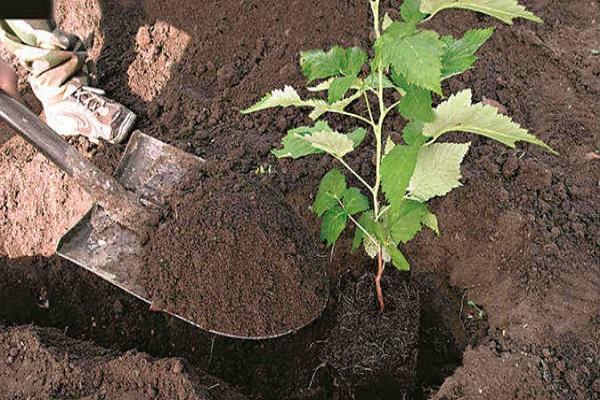
Care advice
The methods of growing the variety Bryanskoe Divo are slightly different from the methods of growing raspberries of other varieties, which allows you to take a fresh look at this hybrid.
Watering mode
Watering is carried out twice a day, according to the size of the bush. This is important in the first years of a raspberry's life, as the young plant must not dry out. Also, the portions are increased during the fruiting period so that the berries are filled with juice. Seedlings and adult plants are watered in the evening or in the morning, when the moisture does not have time to evaporate.
If you adhere to all the rules of watering, then raspberries will create powerful roots.
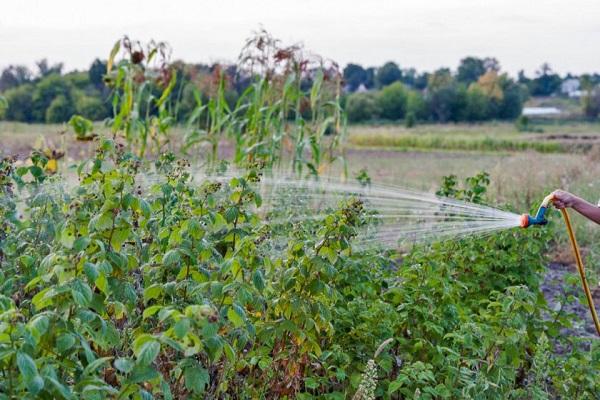
Overgrowth control and loosening
From time to time, the soil is loosened so that the water is well saturated and the roots breathe. But this is done carefully so as not to damage the root system. Weeds and small shoots are carefully removed, because such plants take away strength and energy from raspberries. In order to prevent overgrowth from appearing near the seedling at first, iron or wooden plates are placed.
Fertilizing raspberries
Fertilizers are applied twice a year. For this procedure, manure or its water infusion is used. Also, some dressings improve the taste of raspberries Bryansk Divo. For example, wood ash is added under each bush at the end of July.
Pruning bushes
Before starting, you should get sharp instruments, it is very important that they are sterile. This will help prevent disease and protect the plant from infection.
With the beginning of the growing season, small shoots are carefully cut off. Such pruning stimulates the growth of new, young shoots. Lateral shoots are endowed with large fruits. The same pruning is carried out after the end of the fruiting period.
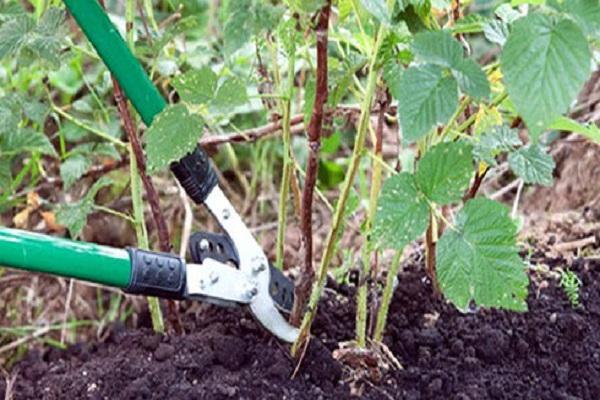
If you regularly carry out such procedures, you will be able to keep the soil fertile for many years, since fertilizers will not be wasted. Pruning will not only form a bush, but also prevent pest control. Insects can hide in leaves or branches.
In this case, the berries will be larger, and the bush will not "get tired" during the fruiting process.
Preparing for winter
After the last, autumn pruning, preparations for the winter period begin. The Bryansk marvel is famous for its winter hardiness and is able to withstand negative temperatures. Usually the trunk circle is insulated, at the base I sprinkle raspberries with straw and manure, which will warm the plant in the cold.

Diseases and pests
Like any other crop, this variety is susceptible to certain diseases. Although the variety is considered resistant, there are pests that every gardener knows.
To begin with, such a representative is the raspberry beetle. These are insects of yellow-gray color, small in size. They are dangerous because they destroy the buds. After collecting the beetles in jars, the plants are treated with Iskra.
The raspberry-strawberry weevil is another pest known to gardeners. The larvae of this creature also eat the buds before the flowers appear there. The treatment is carried out with the same preparation, but before that, beetles are manually collected.
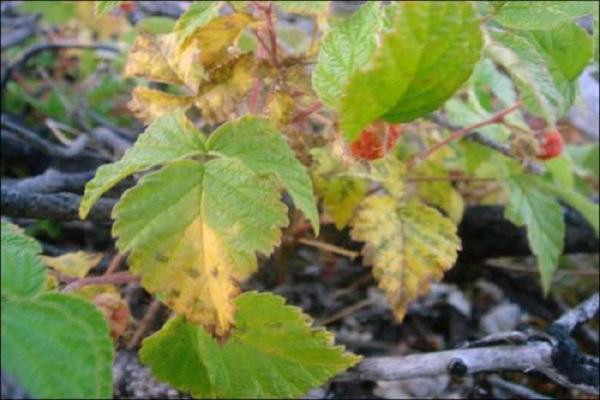
Reproduction of raspberries
Reproduction of raspberries by lignified offspring is considered one of the easiest ways, since here the chance of successful reproduction is high. Young green offspring are also used. Root cuttings are well accepted by the soil, which is why gardeners often practice this method. And the most popular is the division of the bush.
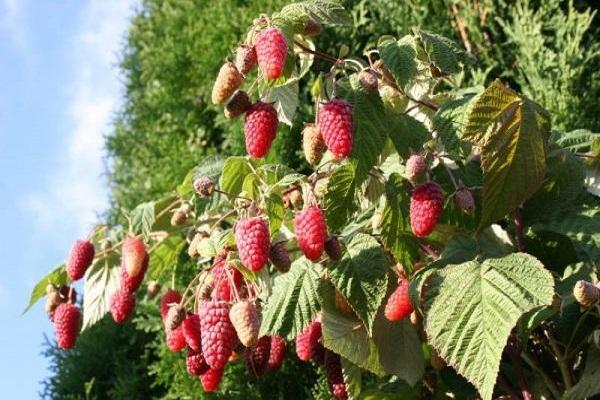
Harvesting and storage rules
The collection is carried out from August to September. Store in the form of preserves, jams and similar products. Raspberries are quick to juice when sprinkled with sugar. The berries are dried for later use as tea.

